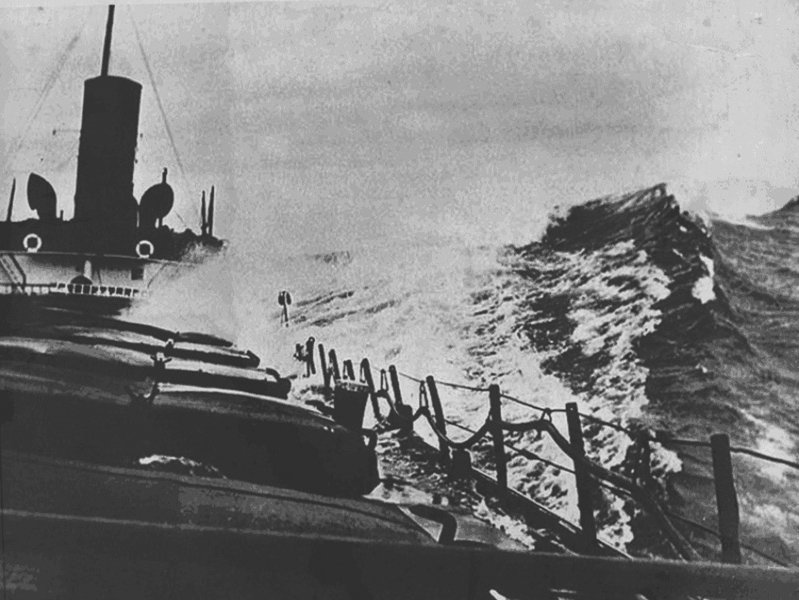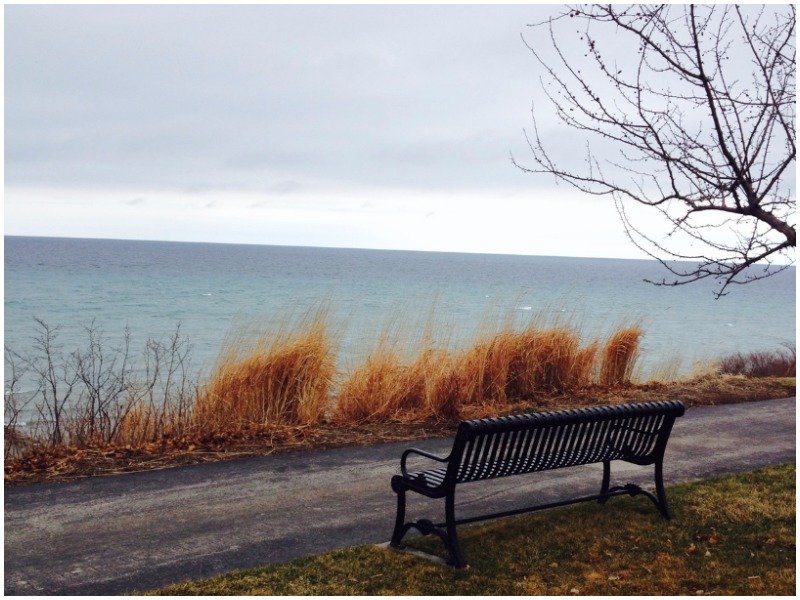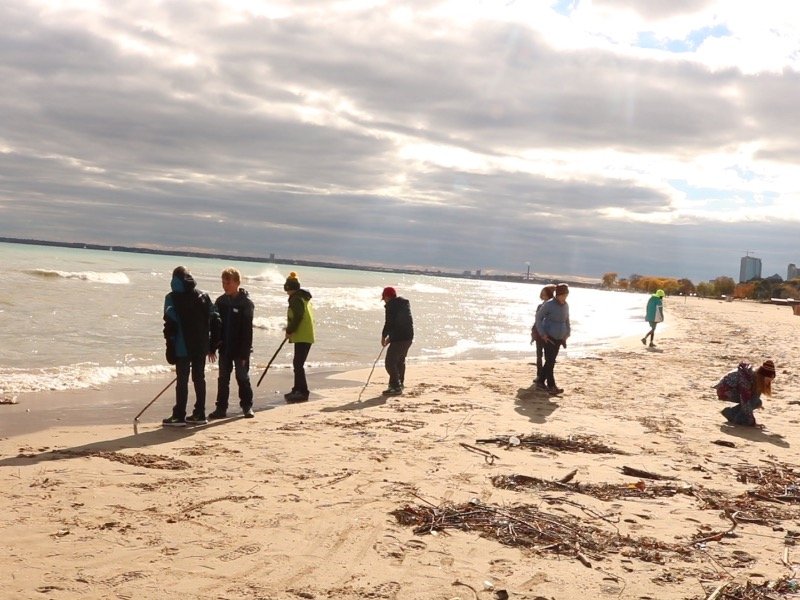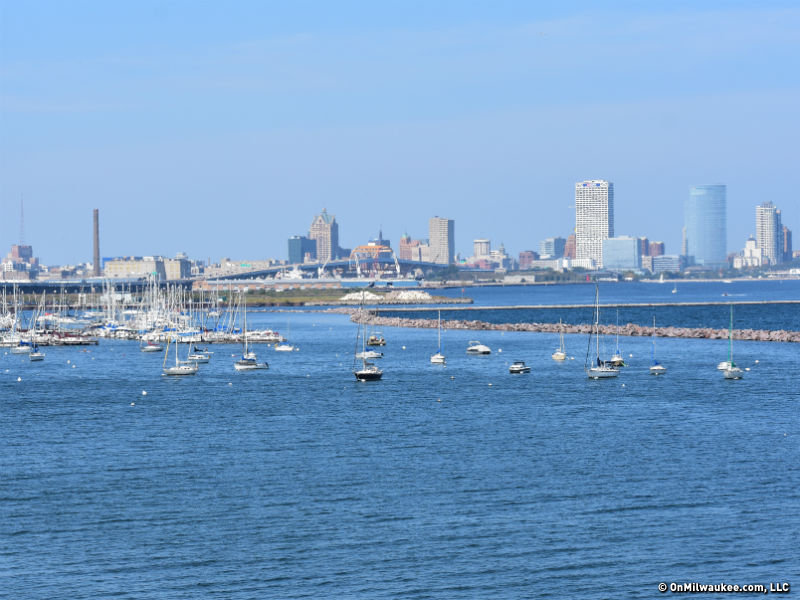Every Milwaukeean has a Lake Michigan story and for the next seven days OnMilwaukee will share as many as possible during "MKE Lake Week," sponsored by the Harbor District. Love our lake? You're in the right place.
Though we all remember the 2010 "once in a lifetime" storm that caused terrible flooding around the Milwaukee area, few of us have seen anything like the dramatic 1913 Great Lakes hurricane, which toppled ships, killed hundreds sailors – and folks on shore, too – from Lake Superior and Lake Michigan to Lake Huron.
Thanks to Milwaukee author Michael Schumacher – whose 12 books range from stories to shipwrecks to biographies of famous folks to works on beat poet Allen Ginsberg – we can learn more about the four-day storm that raged through the Great Lakes, including Milwaukee, in November 1913.
When Schumacher’s book, "November’s Fury: The Deadly Great Lakes Hurricane of 1913," was published a few years ago in hardcover by the University of Minnesota Press (it is now out in paperback) we got the chance to ask him about the book – and the storm.
OnMilwaukee.com: Tell us a little bit about the 1913 hurricane.
Michael Schumacher: This storm is universally accepted as the worst in Great Lakes history. It hit Lakes Superior and Michigan first; then, two days later, when it seemed to have let up, it joined forces with a storm from the southeast and hit Lake Huron with incredible force, sinking eight boats in a matter of hours. The average storm blows in and out of the area in a day or two. This one was at its peak for four days – an unbelievable sustained energy.
More than 250 sailors lost their lives. Dozens of boats were destroyed, heavily damaged, grounded or blown ashore. Surviving sailors spoke in hushed tones about waves the height of three-story buildings. The winds were so vicious that they blew away entire superstructures on ships. Shores were resculpted. Cleveland was hit very hard and was incapacitated for the better part of a week. Many stories emerged from this storm, and I tried to include as many as possible in the book.
Has Milwaukee – or the Great Lakes – seen anything like it since, or had it before?
There have been a number of very bad storms on the Great Lakes since records have been kept, but nothing like this – certainly nothing in comparison, in terms of destruction and loss of life.
The storm that sank the Carl D. Bradley on Lake Michigan in 1958 was a bad one, as were the ones that sank the Daniel J. Morrell on Lake Huron in 1966 and the Edmund Fitzgerald on Lake Superior in 1975. The 1905 storm and the Armistice Day storm of 1940, both hitting Lake Superior especially hard, were also notable for their intensity.
What were the storm's effects in Milwaukee and in Lake Michigan?
The storm was especially nasty on Lake Michigan during its first two days. Since Lake Michigan essentially runs north-south, a storm out of the north can create huge waves around Milwaukee and Chicago, as the water is pushed, unimpeded, down the length of the lake. This is what happened in 1913.
The enormous waves destroyed a couple of pile drivers near a breakwater project, and ripped up 1,500 feet of construction. It was even worse in Chicago. Two men were picked up by the wind, tossed into the Chicago River, and drowned. Lake Shore Drive was flooded, and a project at Lincoln Park, already eight years in the making, was washed away. On the lake itself, boats were tossed around and the storm's first casualty, the Louisiana, a wooden steamer, was lost after grounding near the Door Peninsula's Washington Island and catching fire. Fortunately, nobody was lost or seriously injured.
Did Milwaukee take any steps to mitigate damage in case of potential future storms?
It's doubtful that anything could mitigate damage in a storm of this nature. One simply cannot control the weather. In recent years, I've talked to captains of the huge 1,000-footers working the lakes today, and they say there's no way their vessels would ever sink. I hope, for their sake, that they're right, but I think time has proven what happens when we underestimate the elements or foolishly believe we can master them.
As for damage on land: what would one do? The 1913 storm tore through the docks and breakwaters as if they didn't exist. There's photograph in my book that shows the devastation the storm took out on one of the lifesaving stations in Michigan. The storm crushed the structures to tinder, destroyed rescue vessels, and left the station a holy mess. How do you deal with high, sustained winds over a 12- to 16-hour period? Historic storms, like the hurricanes that hit Galveston and New Orleans, were going to have their ways, despite the best efforts by humans. The same was the case here. Nature will almost always win.
We're used to the occasional "100-year" storm, but are we prepared if a hurricane like the 1913 one were to happen again?
Improvements in weather forecasting have greatly diminished the chances of this kind of destruction ever happening again. In 1913, the weather forecasts were sent from Washington D.C., via telegraph, to ports around the lakes. Updates were spotty. Flags and lanterns were used to warn boats of conditions, and many captains chose to ignore them. There were no jetstreams, as far as forecasters of the time knew.
Weather systems were tracked and charted, but this was a slow process, and boats would leave ports with little knowledge of just how deadly it was on the lakes. Radar? There was no radar. Ship-to-shore communications existed, but in 1913 very few vessels were equipped for this.
It's important to remember that the vast majority of ships stayed off the lakes during the storm of 1913. Some stayed at dockside, others took shelter behind islands or in other locations in the lee of the storm. The best preparation for a major storm is to prudently stay off the water until it passes. Weather forecasting makes this possible.
You've got a pretty impressive resume as an author. Can you tell us a bit about your work and what you might have on tap in terms of future book projects?
I feel fortunate to have been able to write about topics that interest me. I've always been interested in the literature of the Beat Generation, and I've written a biography of Allen Ginsberg ("Dharma Lion"), edited a book of letters between Ginsberg and his father ("Family Business"), and am currently developing a project that would have me editing a volume of Ginsberg's journals.
I've always had great interest in the Great Lakes, and besides "November's Fury," I've written about the wrecks of the Edmund Fitzgerald ("Mighty Fitz") and Carl Bradley ("Wreck of the Carl D."). The biographies (Eric Clapton, Phil Ochs, Francis Ford Coppola, George Mikan, Will Eisner and Al Capp) were all about people who interested me. So it's been good.
The future looks busy. Besides the Ginsberg project, I will be writing a book about the 1968 presidential election and another about America's obsession with diners – and, more specifically, the history of Frank’s Diner, one of the oldest diners still operating, located in my hometown. There's been some discussion about another Great Lakes project. I'm always happiest when I'm busy. I'm traveling, meeting interesting people, and studying topics that interest me.
Born in Brooklyn, N.Y., where he lived until he was 17, Bobby received his BA-Mass Communications from UWM in 1989 and has lived in Walker's Point, Bay View, Enderis Park, South Milwaukee and on the East Side.
He has published three non-fiction books in Italy – including one about an event in Milwaukee history, which was published in the U.S. in autumn 2010. Four more books, all about Milwaukee, have been published by The History Press.
With his most recent band, The Yell Leaders, Bobby released four LPs and had a songs featured in episodes of TV's "Party of Five" and "Dawson's Creek," and films in Japan, South America and the U.S. The Yell Leaders were named the best unsigned band in their region by VH-1 as part of its Rock Across America 1998 Tour. Most recently, the band contributed tracks to a UK vinyl/CD tribute to the Redskins and collaborated on a track with Italian novelist Enrico Remmert.
He's produced three installments of the "OMCD" series of local music compilations for OnMilwaukee.com and in 2007 produced a CD of Italian music and poetry.
In 2005, he was awarded the City of Asti's (Italy) Journalism Prize for his work focusing on that area. He has also won awards from the Milwaukee Press Club.
He has be heard on 88Nine Radio Milwaukee talking about his "Urban Spelunking" series of stories, in that station's most popular podcast.







